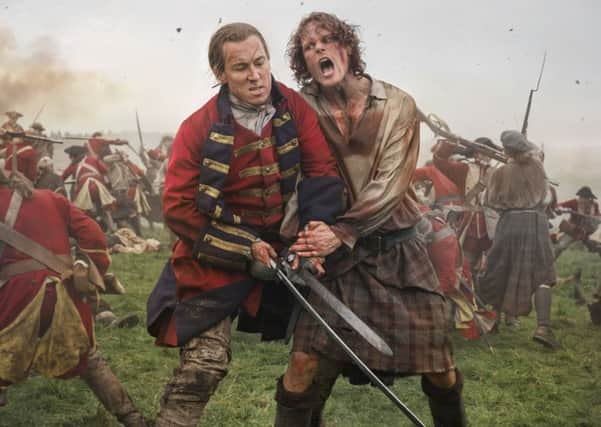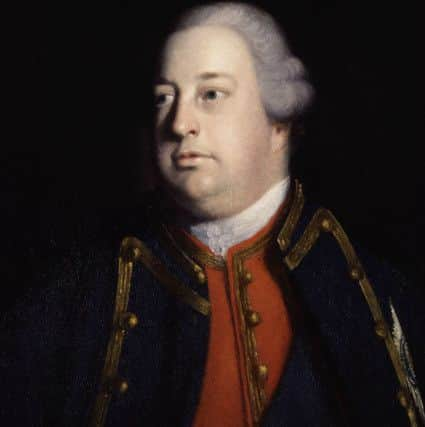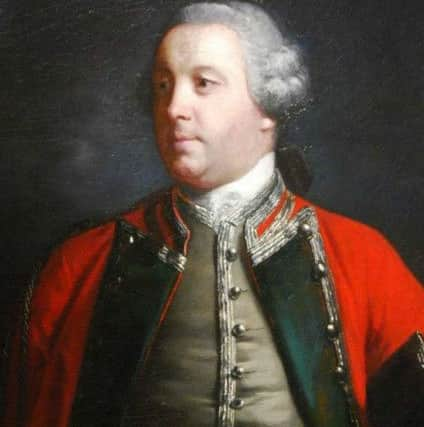Who was the most notorious '˜Redcoat' of the 1745 rebellion?


The Duke of Cumberland, who led the loyalist forces against Charles Edward Stuart’s army, largely left the dark task of suppressing the population to his compatriots following his victory at Culloden.
Following the decisive defeat of the Jacobite army, Highlanders faced killings, rapes and burning of homes and crops in the immediate aftermath of the battle as Hanoverians journeyed through the countryside.
Advertisement
Hide AdOutlander writer Diana Gabaldon created one of the vilest characters of recent memory in the sadistic Hanoverian Captain Black Jack Randall, who was prone to enjoying his own cruelty.


But who were the real Redcoats of the ‘45 who led the brutal attacks across the Highlands and Islands? Here are five to consider.
Captain Caroline Frederick Scott
This Edinburgh soldier relished his own notoriety with one commentator describing his brutal streak as like that of a “medieval condotterie or a commander of the Waffen SS”.


Scott, a diplomat’s son, was named after his godmother Princess Caroline of Ansbach, wife of King George II. He commissioned in the Royal North British Dragoons and took overall command of the defences at Fort William during the Jacobite siege of March 1746.
Historian Trevor Royle, in his book Culloden: Scotland’s Last Battle, said Scott was motivated by a “visceral dislike of Highlanders” and pursued a personal vendetta against Bonnie Prince Charlie.
As Scott toured around the Hebrides looking for the defeated Jacobite leader, he landed on various islands where he ordered his men to plunder livestock and carry out the most atrocious offences.
Advertisement
Hide AdScott’s men reportedly raped a blind woman on Rona before targeting two girls on Raasay, Kristie Montogomery and Marion McLeod, according to accounts left by the island’s laird.


The government forces then set about robbing the islanders, who were left without clothes or “not the value of two shillings sterling”.
Advertisement
Hide AdHis treatment of Isabel Haldane, wife of Ardsheal, 5th chief of Clan Stewart, who led his men at Culloden, illustrates the cruel streak of Scott.
Scott became fixed on Haldane and occupied her family home for several days during his search for Ardsheal. He later returned take her livestock and food before cutting down the orchard. He ordered for all doors, windows, wood panelling and slates off the roof to be removed with the house later burnt to the ground.


Captain John Fergusson
Long lives the reputation of Captain John Fergusson, from Aberdeenshire, for his abuse of prisoners during the 1745 rising.
He was directly involved in the hunt for Bonnie Prince Charlie following Culloden with the testimony of one of the Jacobite’s captured captains, Felix O’Neill, giving some insight into Fergusson’s methods.
O’Neill claimed: ‘I was brought before Captain Ferguson, who used me with the barbarity of a pirate, stripped me, and had ordered me to be put in a rack, and whipped by his hangman, because I would not confess where I thought the Prince was.
“As I was just going to be whipped, being already stripped, Lieutenant McGaghan of the Scots Fusiliers, who commanded a party under Captain Ferguson, very generously opposed this barbarous usage.”
Advertisement
Hide AdWhile marauding through the Highlands, Fergusson seized a torture instrument known as ‘the Barisdale’ after MacDonald of Barisdale who created the rack-style device.
Several confessions are said to have been extracted by Fergusson using the tool.
Advertisement
Hide AdMarine’s under the command of Fergusson and his compatriot Captain Duff arrived on the isle of Canna with intent of raping its women and girls. The islanders received a tip off of the approaching forces with many hiding in caves. One woman, the pregnant wife of Evan Mor MacIsaacs, managed to flee the soldiers who came into her home and hid in a bog. According to an account in the Lyon of Mourning, a collection of accounts of the uprising, the woman miscarried and died the following day.
Major James Lockhart
This Lanarkshire solder was responsible for several atrocities in Glenmoriston and Strathglass following Culloden.
Craig said that Lockhart’s speciality was encouraging his men to gang-rape women and hang men, regardless of whether there was proof or not of any Jacobite support.
A widely repeated story about Lockhart’s jacket, lost during the earlier Battle of Falkirk, was later found on the back of one of the Jacobite deserters hanged at Inverness, according to Royle.
Colonel Edward Cornwallis
Lt Colonel Edward Cornwallis, from London, led 320 soldiers through the countryside on an order to “plunder, burn and destroy through all the west part of Invernesshire called Lochaber.”
Their targets included Achnacarry House, home of leading Jacobite figure Donald of Lochiel, also known as Gentle Lochiel, who reportedly looked on as the family seat burnt to the ground.
Advertisement
Hide AdThere are accounts of men being shot in the back as Cornwallis ventured forth on the mission, which historian Allan Macinness described as a systematic state terrorism.
Following Culloden, Cornwallis was appointed governor of Nova Scotia and sent across the Atlantic to found Halifax.
Advertisement
Hide AdIn 1749, he issued the “scalping proclamation” and offered a bounty to anyone who killed a Mi’kmaq adult or child in order to drive them off mainland Nova Scotia. Wholesale attacks on Mi’kmaq villages followed with mercenaries reportedly bringing in dozens of employees to claim bounties.
A statue of Cornwallis was removed from a Halifax park earlier this year following protests.
Colonel John Grant
The son of Grant of Knockando and Strathspey, this young captain let about 200 men government soldiers through Lochaber.
According to an account held in a Lyon in Mourning, a collection of papers, documents and interviews linked to the 45, which is broadly seen to be biased to the Jacobite cause, a devastating account of Colonel Grant’s tactics is held.
The account, left by a Presbyterian minister from Fort William, said the soldiers “stripped men, women, and children without distinction of condition or sex.”
He set fire to the home of Ewen Cluny MacPherson, chief of clan MacPherson, and left his wife and children with only five milk goats to support themselves.
As Grant pursued a path through Lochaber “he burnt and plundered as he marched,” the account said.
